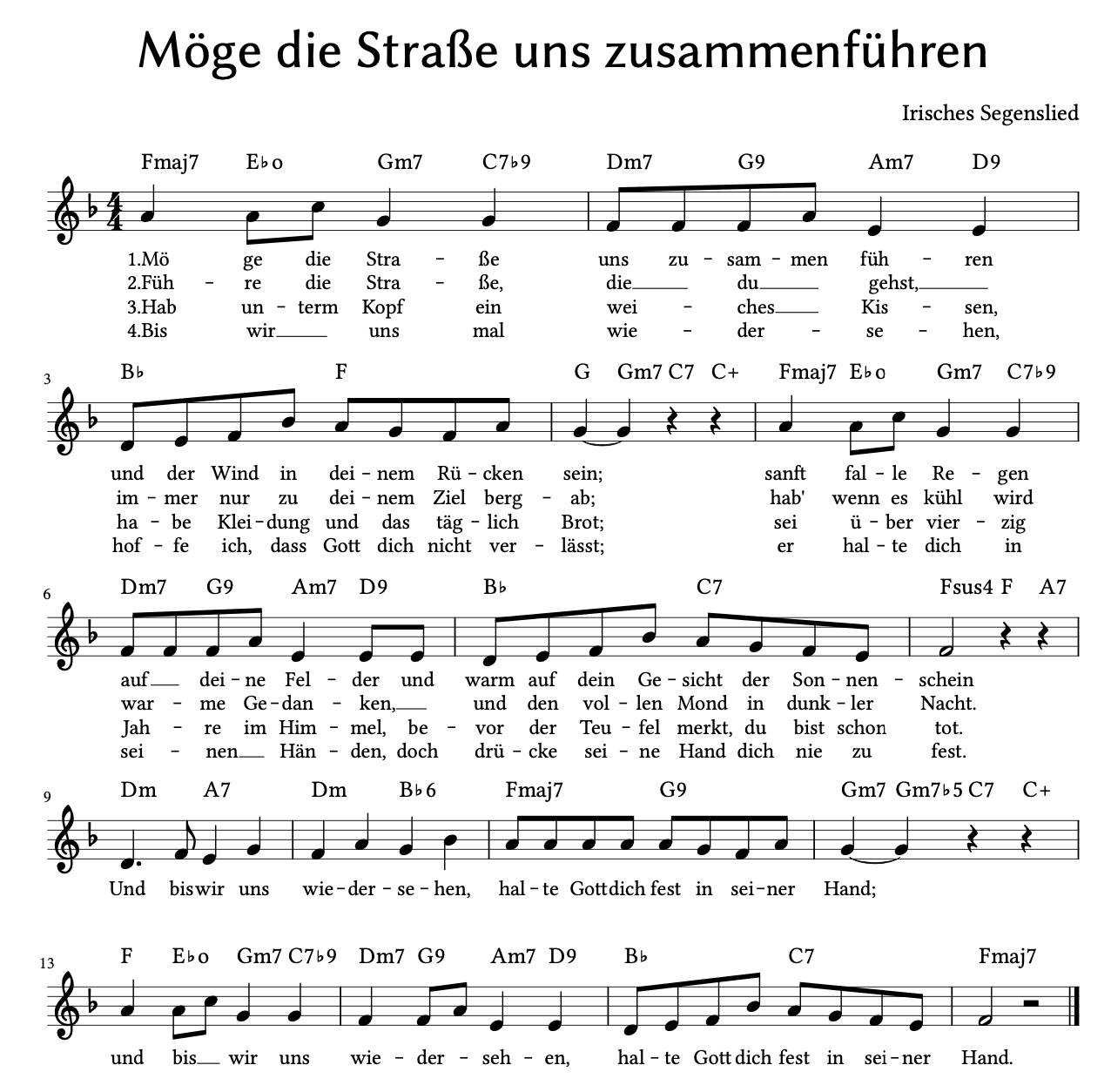/ Fmaj7 E♭o Gm7 C7♭9 / Dm7 G9 Am7 D9 /
B♭ - F - / G Gm7 C7 C+ /
Fmaj7 E♭o Gm7 C7♭9 / Dm7 G9 Am7 D9 /
B♭ -C7 - / Fsus4 - F A7 /
Dm - A7 - / Dm - B♭6 - / Fmaj7 - G9 - / Gm7 Gm7♭5 C7 C+ /
The rest is up to you!
Ideas behind it are melody notes that are included in the chords, with some ii-V-I sequences. Use of chord extensions. Modulate to relative minor for the bridge. The feel will obviously make it more jazzy - or not. Pushed notes/chords, swing will change feel too. Just hope this isn't doing someone's homework.
Here is the arrangement, written out:




